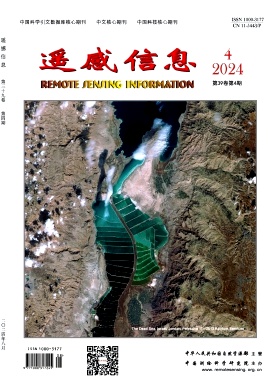1996年NASA/JPL机载合成孔径雷达的PacRim部署
引用次数: 3
摘要
在1996年11月和12月,NASA/JPL机载合成孔径雷达系统(AIRSAR)开始对几个环太平洋国家进行为期七周的战役。这次任务是由美国宇航局、澳大利亚空间科学与应用办公室和新南威尔士大学联合组织的。该任务的主要目的是在美国和环太平洋国家之间建立雷达遥感应用领域的合作努力。美国和参与国的研究人员都获得了SAR数据。除夏威夷外,作者还拍摄了新西兰、澳大利亚、巴布亚新几内亚、马来西亚、文莱、菲律宾、台湾、泰国和柬埔寨的一些地区,包括一些国家的沿海地区。这种多频率、偏振和干涉SAR系统的目标区域包括火山、地质、水文和土地利用测绘研究地点,以及生成崎岖和难以到达地区高度图的森林山脉。本文章由计算机程序翻译,如有差异,请以英文原文为准。
The NASA/JPL Airborne Synthetic Aperture Radar's 1996 PacRim deployment
In November and December 1996, the NASA/JPL Airborne Synthetic Aperture Radar System (AIRSAR) embarked on a seven-week campaign to several Pacific Rim countries. This mission was jointly organized by NASA, Australia's Office of Space Science and Application, and University of New South Wales. The major purpose of the mission is to establish a collaborative effort in the area of radar remote sensing application between the United States and the Pacific Rim countries. SAR data were acquired for both U.S. researchers as well as the participating countries. In addition to Hawaii, the authors imaged areas of interest in New Zealand, Australia, Papua New Guinea, Malaysia, Brunei, the Philippines, Taiwan, Thailand, and Cambodia including coastal regions of some countries. The target areas of this multi-frequency, polarimetric and interferometric SAR system included volcanoes, sites for studies in geology, hydrology, and land use mapping, and forested mountains to generate height maps of rugged and inaccessible areas.
求助全文
通过发布文献求助,成功后即可免费获取论文全文。
去求助
来源期刊
自引率
0.00%
发文量
3984
期刊介绍:
Remote Sensing Information is a bimonthly academic journal supervised by the Ministry of Natural Resources of the People's Republic of China and sponsored by China Academy of Surveying and Mapping Science. Since its inception in 1986, it has been one of the authoritative journals in the field of remote sensing in China.In 2014, it was recognised as one of the first batch of national academic journals, and was awarded the honours of Core Journals of China Science Citation Database, Chinese Core Journals, and Core Journals of Science and Technology of China. The journal won the Excellence Award (First Prize) of the National Excellent Surveying, Mapping and Geographic Information Journal Award in 2011 and 2017 respectively.
Remote Sensing Information is dedicated to reporting the cutting-edge theoretical and applied results of remote sensing science and technology, promoting academic exchanges at home and abroad, and promoting the application of remote sensing science and technology and industrial development. The journal adheres to the principles of openness, fairness and professionalism, abides by the anonymous review system of peer experts, and has good social credibility. The main columns include Review, Theoretical Research, Innovative Applications, Special Reports, International News, Famous Experts' Forum, Geographic National Condition Monitoring, etc., covering various fields such as surveying and mapping, forestry, agriculture, geology, meteorology, ocean, environment, national defence and so on.
Remote Sensing Information aims to provide a high-level academic exchange platform for experts and scholars in the field of remote sensing at home and abroad, to enhance academic influence, and to play a role in promoting and supporting the protection of natural resources, green technology innovation, and the construction of ecological civilisation.

 求助内容:
求助内容: 应助结果提醒方式:
应助结果提醒方式:


